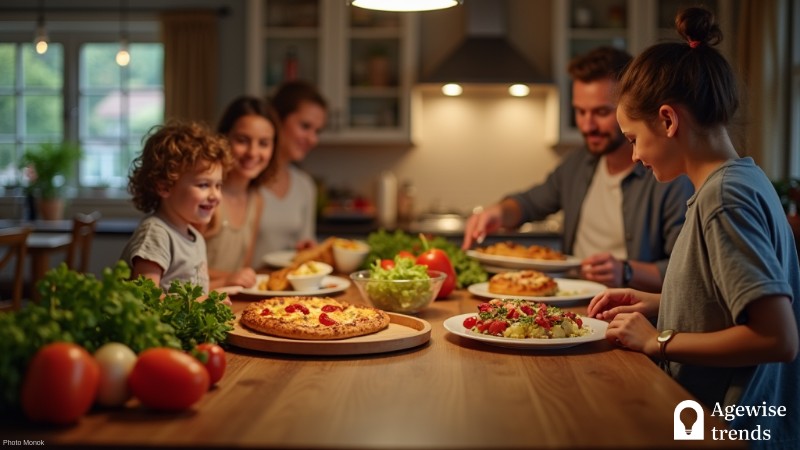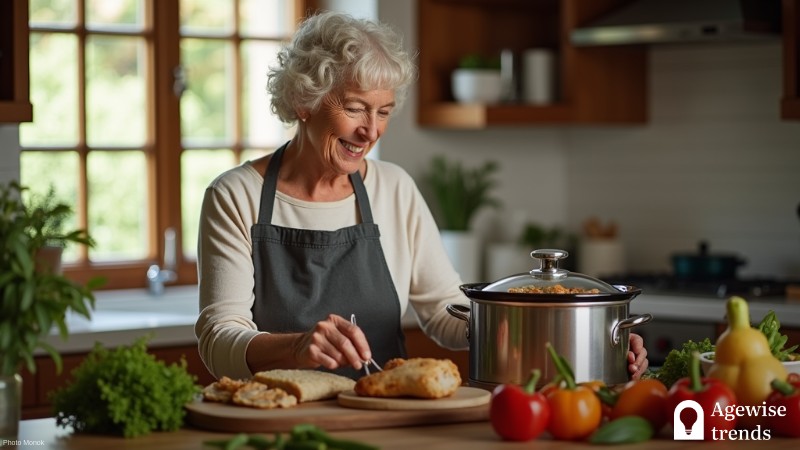Foods rich in nostalgic value and diverse textures can significantly enhance meal enjoyment for older adults, according to a study by Washington State University. Carolyn Ross, a professor at WSU’s School of Food Science, highlights the importance of creating appetizing and nutritious options for individuals over 60 years old.
The study involved serving two breakfasts and two desserts to 81 participants, with an average age of 71. After taste tests, participants shared their experiences and eating habits, revealing that nostalgia plays a crucial role in meal satisfaction.
Key Takeaways
Foods that evoke nostalgic memories and offer a variety of textures can boost meal enjoyment and promote healthier eating habits among seniors.
- The memories tied to food play a significant role in shaping how seniors enjoy their meals, ultimately enhancing overall satisfaction.
- Comfort foods such as barbecue and cheese earn high ratings due to their strong nostalgic connections.
- Meal planning should strike a balance between nutritional needs and personal preferences by incorporating straightforward cooking methods and meal prepping.
The role of nostalgia in senior meal preferences
Food-related memories play a significant role in shaping how seniors perceive their meals, often enhancing their overall dining experience and making their food more enjoyable. The findings of the study revealed that consuming nostalgic foods has a positive impact on encouraging healthier eating habits, ultimately assisting seniors in maintaining a well-balanced and nutritionally sufficient diet.
Among the foods mentioned, barbeque stood out as a significant nostalgic element, highlighting how personal experiences shape food preferences. Ross aims to refine the definition of comfort foods to better cater to seniors’ tastes, ensuring they are both satisfying and nutritious.
Comfort foods and texture in senior nutrition
Comfort foods consistently received higher ratings among participants in the study, although individual preferences tended to vary significantly due to the diverse cultural backgrounds and unique culinary traditions of each person. One standout ingredient that emerged from the findings was cheese, which was widely recognized and appreciated for its strong association with both nostalgia and a deep sense of comfort.
Beyond taste, texture remains a key factor in meal enjoyment for older adults. To ensure meals are appealing, understanding flavor preferences and texture expectations is crucial. Meal planning should strike a balance between nutrition and personal preferences, ensuring food remains both enjoyable and beneficial to health.
Practical meal planning strategies for seniors
Creating well-balanced meals for seniors requires meeting their nutritional needs while respecting their personal preferences. Batch cooking is an effective strategy, ensuring healthy meals are readily available and easy to access. Preparing meals in advance saves time and effort, making it more convenient to maintain a nutritious diet.
Efficient grocery shopping also plays a key role in meal planning. By organizing shopping lists and choosing ingredients that align with dietary needs, caregivers and seniors can make healthier choices while minimizing food waste.
Incorporating nutritious comfort foods can enhance both the taste and appeal of meals. Dairy products, for example, provide essential nutrients, but they should be prepared in a healthier way. Cheese can add flavor and texture, yet moderation is necessary due to its fat content.
Likewise, meal variety is crucial in keeping seniors engaged with their diet. Alternating nostalgic favorites like a barbeque with hearty soups or warm casseroles can bring both nutritional balance and a sense of comfort, evoking fond memories while maintaining dietary goals.
Simplicity in meal preparation is key for both ease of consumption and digestion. Using simple, easily digestible ingredients helps prevent discomfort while keeping meals flavorful. Basic cooking techniques like steaming, roasting, or slow cooking preserve nutrients and make meals easier to chew and swallow. With thoughtful planning, balanced ingredients, and familiar flavors, caregivers can create enjoyable, nourishing meals that support seniors’ well-being.
Improving senior nutrition with nostalgic foods
By incorporating nostalgic elements into senior meal planning, meals become more enjoyable and encourage healthier eating habits. Understanding the deep connection between food and memory allows meal preparers to create dishes that satisfy both the palate and emotional well-being of older adults.
Further research will continue to explore the specific flavors and taste profiles most appealing to seniors, helping refine the development of senior-friendly comfort foods in the future.















